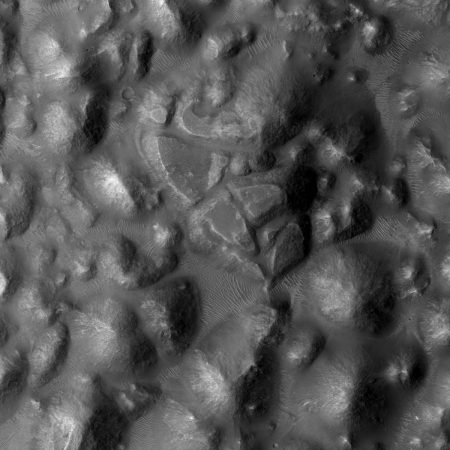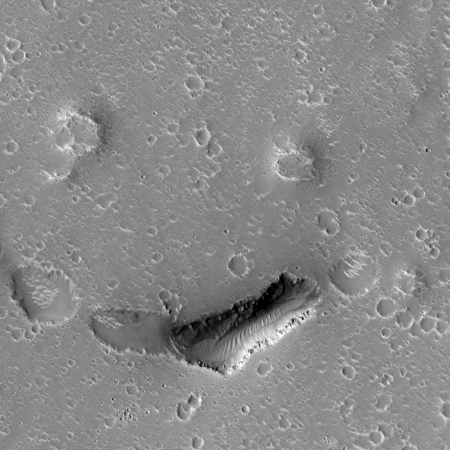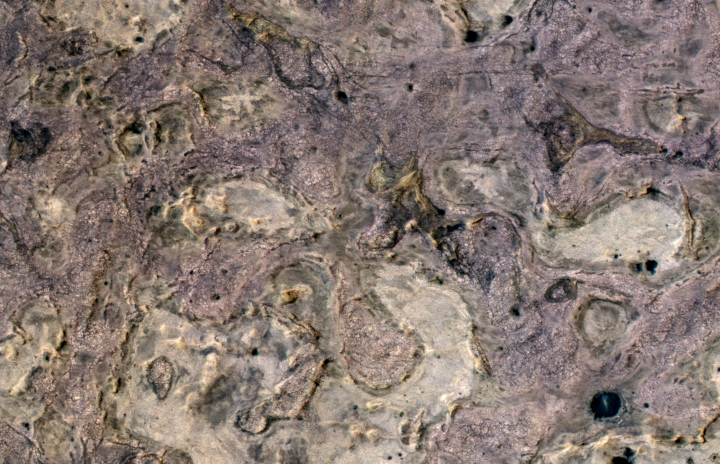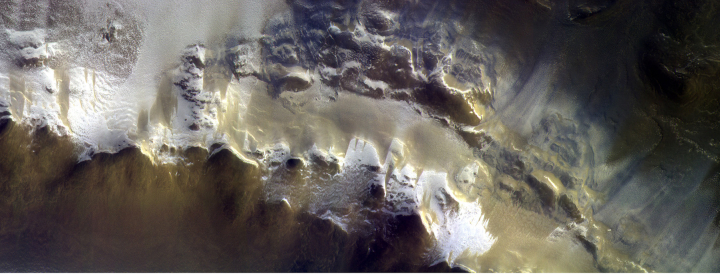Why jets formed on Comet 67P/C-G
Scientists analyzing the data produced by Rosetta while it was flying in formation with Comet 67P/C-G have determined that the comet’s complex topology acted almost like nozzles to encourage evaporating material to form jets.
The new study shows for the first time that mainly the unusual shape and jagged topography of the comet are responsible for this phenomenon. The researchers analyzed images at different observation geometries of the Hapi region located on the “neck” of the comet, the narrow part connecting its two lobes. In computer simulations, they were able to reproduce these images thus gaining a better understanding of the driving processes.
In particular, two effects proved to be decisive. Some regions on the surface are located at lower altitudes or in the shade. The first rays of sunlight reach them later. In contrast, the frost evaporates particularly efficiently from the early and strongly illuminated regions. In addition, pits and other concave structures virtually concentrate gas and dust emissions – much like an optical lens.
This means that predicting the evaporation patterns on other comets will require first obtaining a detailed map of the surface, showing both its topography and make-up. This also means that any future explorers will first have to send a robot scouting mission so that they can plan a safe arrival during active periods.
Scientists analyzing the data produced by Rosetta while it was flying in formation with Comet 67P/C-G have determined that the comet’s complex topology acted almost like nozzles to encourage evaporating material to form jets.
The new study shows for the first time that mainly the unusual shape and jagged topography of the comet are responsible for this phenomenon. The researchers analyzed images at different observation geometries of the Hapi region located on the “neck” of the comet, the narrow part connecting its two lobes. In computer simulations, they were able to reproduce these images thus gaining a better understanding of the driving processes.
In particular, two effects proved to be decisive. Some regions on the surface are located at lower altitudes or in the shade. The first rays of sunlight reach them later. In contrast, the frost evaporates particularly efficiently from the early and strongly illuminated regions. In addition, pits and other concave structures virtually concentrate gas and dust emissions – much like an optical lens.
This means that predicting the evaporation patterns on other comets will require first obtaining a detailed map of the surface, showing both its topography and make-up. This also means that any future explorers will first have to send a robot scouting mission so that they can plan a safe arrival during active periods.






